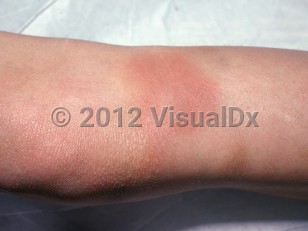Disorders of hemostasis may be categorized as:
- Primary hemostasis – Involving VWF, platelets, and the endothelium. Lack of these factors results in prolonged bleeding, petechiae, or easy bruising.
- Secondary hemostasis – Involving the coagulation cascade and the 13 factors. Lack of these factors can result in more profound bleeding, such as hemarthroses, or bleeding into cavities and muscles.
VWF is an important part of initial hemostasis and binds to the damaged endothelium and activates platelets. Additionally, VWF carries factor VIII, and a deficiency in VWF results in a relative deficiency in VIII (although it is quantitatively normal).
There are three classifications of von Willebrand disease (VWD):
- Type 1 – a quantitative reduction (most common)
- Type 2 – abnormal VWF
- Type 3 – absent VWF (with many subtypes)
Young patients with VWD may first present to the emergency room or pediatrician with bruising, and this can cause suspicion of physical abuse. Thus, while appropriate action regarding the suspicion of abuse is important, the workup can be challenging. Unusual bruising or injury, where abuse is denied, should involve consideration of a bleeding disorder, and it may also involve referral to a hematologist to exclude a clotting disorder.



